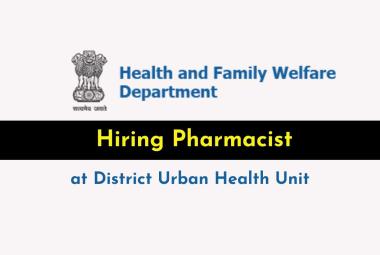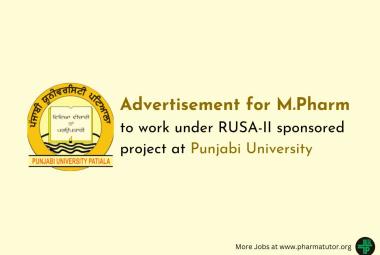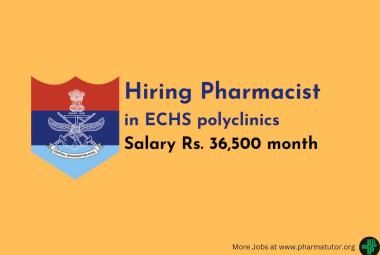ABOUT AUTHORS:
Waghmare P.V.*, Bhusnure O.G., Chinchole A.S., Usnale S.V.,Chavan D.V.
Master of pharmacy, Department of Quality Assurance
Maharashtra College of Pharmacy, Nilanga, Dist. Latur (MS) 413521, India
*pradeep.waghmare90@gmail.com
ABSTRACT
Recent advances in Novel Drug Delivery Systems (NDDS) aim for designing dosage forms, convenient to be manufactured and administered, free of side effects, offering immediate release and enhanced bioavailability, so as to achieve better patient compliance. MDT are intended and designed to disintegrate and dissolve in saliva and then easily swallowed without need of water which is a major benefit over conventional dosage form. Mouth dissolving tablets are solid dosage forms containing drugs that disintegrate in the oral cavity within less than one minute (within <60 seconds) leaving an easy-to-swallow residue. Mouth dissolving tablets have been formulated for pediatric, geriatric, and bed-ridden patients and for active patients who are busy and traveling and may not have access to water. Recent technological developments in the dosage form designing the MDTs fulfill the requirement of patient needs without compromising its efficacy. This review discusses the method of preparation, properties, advantages, disadvantage, characterization ,mechanisms; drugs to be incorporated in the mouth dissolving tablet and evaluation of the product and future trend of the mouth dissolving tablet. These are novel dosage forms which dissolve in saliva within <60 seconds, when put on tongue. Such MDTs can be administered anywhere and anytime, without the need of water and are thus quite suitable for children, elderly and mentally disabled patients. This tablet format is designed to allow administration of an oral solid dose form in the absence of water or fluid intake. This review depicts the various formulation aspects, technologies developed, ingredients used, evaluation tests and marketed formulations.
REFERENCE ID: PHARMATUTOR-ART-1737
INTRODUCTION:
Mouth dissolve tablets (MDT) or melt in mouth or fast dissolving tablet or rapid dissolving tablet, is the name coined for these tablets. These are novel types of tablets that disintegrate/dissolve/disperse in saliva. They are also suitable for the mentally ill, the bed-ridden, and patients who do not have easy access to water. The benefits, in terms of patient compliance, rapid onset of action, increased bioavailability, and good stability make these tablets popular as a dosage form of choice in the current market. Among the various dosage forms developed to improve the ease of administration, the mouth dissolving tablet (MDT) is the most widely preferred commercial products. To obviate the problems associated with conventional dosage forms, mouth dissolving tablets have been developed having good hardness, dose uniformity, easy administration and serves as the first choice of dosage form for paediatrics, geriatrics and travelling patients. To overcome such problems, certain innovative drug delivery systems, like ‘Mouth Dissolving Tablets’ (MDT) have been developed. The technologies used for manufacturing fast-dissolving tablets are freeze-drying, spray-drying, tablet molding, sublimation, sugar-based excipients, tablet compression, and disintegration addition.
MOUTH DISSOLVING TABLET (MDT)
It is a tablet that disintegrates and dissolves rapidly in the saliva, within a few seconds without the need of drinking water or chewing. A mouth dissolving tablet usually dissolves in the oral cavity within 15 sec. to 3 min. Most of the MDTs include certain super disintegrants and taste masking agents.
IDEAL PROPERTIES OF MOUTH DISSOLVING TABLETS (CRITERIA FOR MDTs)4:
They should
1. Not require water to swallow and should dissolve or disintegrate in the mouth within a few seconds.
2. Allow high drug loading.
3. Be compatible with taste masking and other excipients.
4.Have a pleasing mouth feel.
5.Leave minimum or no residue in the mouth after oral administration.
6. Have sufficient strength to withstand the rigors of the manufacturing process and
7. Post manufacturing handling.
8. Exhibit low sensitivity to environmental conditions such as humidity and temperature.
9. Be adaptable and amenable to existing processing and packaging machinery.
10.Allow the manufacture of tablets using conventional processing and packaging equipment at low cost.
11. Be portable without fragility concern and easy to transport.
12.Easily dissolve or disintegrate in saliva within a few seconds.
Unsuitable drug characteristic for MDTs:
1. Short half-life and frequent dosing.
2. Very bitter or otherwise unacceptable taste because taste masking cannot be achieved.
3. Required controlled or sustained release.
ADVANTAGES OF MOUTH DISSOLVING TABLETS:
1. Administration to the patients who cannot swallow, such as the elderly, bedridden patients, patients affected by renal failure & patients who refuse to swallow such as pediatric, geriatric & psychiatric patients.3
2. Good mouth feel property helps to change the perception of medication as bitter pill particularly in pediatric patients
3. No need of water to swallow the tablet
4. First pass metabolism is reduced, thus offering improved bioavailability and thus reduced dose and side effects.
5. Free of risk of suffocation due to physical obstruction when swallowed, thus offering improved safety.
6. Dissolution and absorption of drug is fast, offering rapid onset of action.
7. Convenient and easy to administer as does not require water for oral administration.
8. Durable and sufficient strength to withstand the rigors of the manufacturing process and manufacturing handling.
9. Pleasant mouth feel.
10. Insensitive to environmental conditions such as humidity and temperature.
11. Improved taste without any residue in the mouth after disintegration.
12. Adaptable and amenable to existing processing and packaging machinery.
13. Cost effective.
14. Compatible with taste masking.
15. Rapid drug therapy intervention.6, 7
DISADVANTAGE OF MOUTH DISSOLVING TABLETS:
1.Fast dissolving tablet is hygroscopic in nature so must be keep in dry place.
2. Some time it possesses mouth feeling.
3. MDT requires special packaging for properly stabilization & safety of stable product.8
LIMITATIONS OF MOUTH DISSOLVING TABLETS:
1. The tablets usually have insufficient mechanical strength. Hence, careful handling is required.
2. The tablets may leave unpleasant taste and/or grittiness in mouth if not formulated Properly
3. Drugs which are having relatively lager doses are difficult to formulate in form of fast disintegrating tablet example like ciprofloxin.
4. Patients who concurrently taking medicine like anticholenergics may not be the best candidates for fast disintegrating tablets and the patients suffers from Sjogren’s syndrome or dryness of mouth due to decreases saliva production may not be good candidate for such type of formulation.
IMPORTANT CRITERIA FOR EXCIPIENTS USED IN THE FORMULATION OF MDTs:9
1. It must be able to disintegrate quickly.
2. Their individual properties should not affect the MDTs.
3. It should not have any interactions with drug and other excipients.
4. It should not interfere in the efficacy and organoleptic properties of the product.
5. When selecting binder a (single or combination of binders) care must be taken in the final integrity and stability of the product.
6. The melting points of excipients used will be in the range of 30-350C.
7. The binders may be in liquid, semi liquid, solid or polymeric mixtures.
8. (Ex: Polyethylene glycol, coca butter, hydrogenated vegetable oils)
SALIENT FEATURES OFMOUTH DISSOLVING TABLETS:
1. Ease of administration to patients who refuse to swallow a tablet, such as pediatric and geriatric patients and, psychiatric patients.
2. Convenience of administration and accurate dosing as compared to liquids.
3. Rapid dissolution of drug and absorption which may produce rapid, onset of action.
4. Some drugs are absorbed from the pharynx and esophagus as the saliva passes down into the stomach, in such cases bioavailability of drugs is increased.
5. Ability to provide advantages of liquid medication in form of solid preparation.
6. Pre-gastric absorption can result in improved bioavailability and as a result of reduced dosage, improved clinical performance through a reduction of unwanted effects.
SUPER DISINTEGRANTS USED IN MDTS1, 2, 5
As day’s passes, demand for faster disintegrating formulation is increased. So, pharmacist needs to formulate disintegrants i.e. Superdisintegrants which are effective at low concentration and have greater disintegrating efficiency and they are more effective intragranularly.
This superdisintegrants act by swelling and due to swelling pressure exerted in the outer direction or radial direction, it causes tablet to burst or the accelerated absorption of water leading to an enormous increase in the volume of granules to promote disintegration.
Various types of Super disintegrants used are as follows:
1. Crosspovidone
2. Microcrystalline cellulose
3. Sodium starch glycollate
4. Sodium carboxy methyl cellulose or cross carmelose sodium
5. Pregelatinzed starch.
6. Calcium carboxy methyl cellulose.
7. Modified corn starch. Sodium starch glycollate has good flowability than crosscarmellose sodium.
Factors to be considered for selection of superdisintegrants:
1. It should produce mouth dissolving when tablet meets saliva in the mouth
2. It should be compactable enough to produce less-friable tablets.
3. It can able to produce good mouth feel to the patient. Thus, small particle size is preferred to achieve patient compliance.
4. It should have good flow since it improve the flowability of the total blend.
MECHANISM OF ACTION OF DISINTEGRANTS:
The tablet breaks to primary particles by one or more of the mechanisms listed below:?
1) By capillary action
2) By swelling
3) Because of heat of wetting
4) Due to release of gases
5) By enzymatic action
6) Due to disintegrating particle/particle repulsive forces
7) Due to deformation
1) By capillary action
Disintegration by capillary action is always the first step. When we put the tablet into suitable aqueous medium, the medium penetrates into the tablet and replaces the air adsorbed on the particles, which weakens the intermolecular bond and breaks the tablet into fine particles. Water uptake by tablet depends upon hydrophilicity of the drug /excipients and on tableting conditions. For these types of disintegrants, maintenance of porous structure and low interfacial tension towards aqueous fluid is necessary which helps in disintegration by creating a hydrophilic network around the drug particles.
2) By swelling
Perhaps the most widely accepted general mechanism of action for tablet disintegration is swelling Tablets with high porosity show poor disintegration due to lack of adequate swelling force. On the other hand, sufficient swelling force is exerted in the tablet with low porosity. It is worthwhile to note that if the packing fraction is very high, fluid is unable to penetrate in the tablet and disintegration is again slows down. Disintegration of Tablet by Wicking and Swelling as shown in figure1.
3) Because of heat of wetting (air expansion)
When disintegrants with exothermic properties gets wetted, localized stress is generated due to capillary air expansion, which helps in disintegration of tablet. This explanation, however, is limited to only a few types of disintegrants and cannot describe the action of most modern disintegrating agents.
4) Due to release of gases
Carbon dioxide released within tablets on wetting due to interaction between bicarbonate and carbonate with citric acid or tartaric acid. The tablet disintegrates due to generation of pressure within the tablet. This effervescent mixture is used when pharmacist needs to formulate very rapidly dissolving tablets or fast disintegrating tablet. As these disintegrants are highly sensitive to small changes in humidity level and temperature, strict control of environment is required during manufacturing of the tablets. The effervescent blend is either added immediately prior to compression or can be added in to two separate fraction of formulation.
5) By enzymatic reaction
Here, enzymes present in the body act as disintegrants. These enzymes destroy the binding action of binder and helps in disintegration. Actually due to swelling, pressure exerted in the outer direction or radial direction, it causes tablet to burst or the accelerated absorption of water leading to an enormous increase in the volume of granules to promote disintegration.
6) Due to disintegrating particle/particle repulsive forces
Another mechanism of disintegration attempts to explain the swelling of tablet made with ‘non?swellable’ disintegrants. Guyot?Hermann has proposed a particle repulsion theory based on the observation that non-swelling particle also cause disintegration of tablets. The electric repulsive forces between particles are the mechanism of disintegration and water is required for it. Researchers found that repulsion is secondary to wicking.
7) Due to deformation
Hess had proved that during tablet compression, disintegrated particles get deformed and these deformed particles get into their normal structure when they come in contact with aqueous media or water. Occasionally, the swelling capacity of starch was improved when granules were extensively deformed during compression. This increase in size of the deformed particles produces a breakup of the tablet. This may be a mechanism of starch and has only recently begun to be studied.
NEWER MANUFACTURING TECHNOLOGIES USED NOW A DAYS FOR MDT’S (CONVETIONAL TECHNIQUES)
1. Freeze drying/Lyophillization
2. Molding
3. Sublimation
4. Spray Drying
5. Direct Compression
6. Mass Extrusion
7. Nanonization
8. Cotton Candy Process
9. Fast dissolving films
1. FREEZE DRYING TECHNOLOGY/LYOPHILIZATION:
Lyophillization can be used to prepare tablets that have very porous open matrix network into which saliva rapidly moves to disintegrate lyophilized mass after it is placed in mouth. The drug is entrapped in a water soluble matrix which is freeze dried to produce a unit which rapidly disperses when placed in mouth. Apart from the matrix and active constituents, the final formulation may contain other excipients, which improve the process characteristics or enhance the quality of final product. These include suspending agents, wetting agents, preservatives, antioxidants, colors and flavors. The preferred drug characteristics for freeze drying formulations are water insoluble, low dose, chemically stable, small particle size and tasteless. Lyophillization is relatively expensive and time consuming manufacturing process. Other drawback includes fragility, which make the use of conventional packing difficult and poor stability during storage.
2. MOLDING:
Molded tablets are designed to facilitate fast absorption of drugs through the mucosal lining of mouth by inclusion of water-soluble ingredients. The advantage of this system is that it has a porous structure which enhances dissolution (thereby enhanced bioavailability) and decreased first pass metabolism of certain drugs. As moulding process is employed usually with soluble ingredient (saccharides) which offers improved mouth feel and disintegration of tablets. However, moulded tablets have low mechanical strength, which results in erosion and breakage during handling. The main concern about these molded tablets is their mechanical strength, which can be achieved by using binding agents .As compared to the lyophillization technique, tablets produced by the molding technique are easier to scale up for industrial scale manufacturing.13
3. SUBLIMATION:
To generate a porous matrix, volatile ingredients are incorporated in the formulation that is later subjected to a process of sublimation. Highly volatile ingredients like ammonium bicarbonate, ammonium carbonate, benzoic acid, camphor, naphthalene, urea, urethane and phthalic anhydride may be compressed along with other excipients into a tablet. This volatile material is then removed by sublimation leaving behind a highly porous matrix. Tablets manufactured by this technique have reported to usually disintegrate in 10-20 sec. Even solvents like cyclohexane, benzene can be used as pore forming agents.
4. SPRAY DRYING:
In this technique, gelatin can be used as a supporting agent and as a matrix, mannitol as a bulking agent and sodium starch glycolate or croscarmellose or crospovidone are used as superdisintegrants. Tablets manufactured from the spray-dried powder have been reported to disintegrate in less than 20 seconds in aqueous medium. The formulation contained bulking agent like mannitol and lactose, a superdisintegrant like sodium starch glycolate & croscarmellose sodium and acidic ingredient (citric acid) and/or alkaline ingredients (e.g. sodium bicarbonate). This spray-dried powder, which compressed into tablets showed rapid disintegration and enhanced dissolution.
5. DIRECT COMPRESSION:
Direct compression represents the simplest and most cost effective tablet manufacturing technique. MDT can be prepared by using this technique because of the availability of improved excipients especially super-disintegrants and sugar based excipients.
(a) Super-disintegrants: The rate of disintegration gets affected by the addition of superdisintegrants and hence the dissolution. Other ingredients like water-soluble excipients and effervescent agents also increase the disintegration.
(b) Sugar based excipients: Sugar based excipients are used for taste masking and as bulking agents. Most of the drugs are having unpleasant or bitter taste. And the basic requirement for designing MDTs is that the drug should not have disagreeable taste. So taste masking is necessary in most of the cases. Sorbitol, mannitol, xylitol, dextrose, fructose, etc. are mainly used. Aqueous solubility and sweetness impart a pleasing mouth feel and good taste masking. But not all sugar?based materials have fast dissolution rate and good compressibility or compatibility. However technologies have been developed to make use of the sugar based excipients in the design of fast dissolving tablets. (like dextrose, fructose, lactilol, maltilol, maltose, mannitol, sorbitol, starch hydrolysate, polydextrose and xylitol) Mizumito et al classified sugar-based excipients into two types on the basis of molding and dissolution rate:
Type 1 saccharides (lactose and mannitol) exhibit low mouldability but high dissolution rate.
Type 2 saccharides (maltose and maltilol) exhibit high mouldability but low dissolution rate.
6. MASS-EXTRUSION:
This technology involves softening of the active blend using the solvent mixture of water soluble polyethylene glycol and methanol and expulsion of softened mass through the extruder or syringe to get a cylindrical shaped extrude which are finally cut into even segments using heated blade to form tablets. This process can also be used to coat granules of bitter drugs to mask their taste.
7. NANONIZATION:
A recently developed Nanomelt technology involves reduction in the particle size of drug to nano size by milling the drug using a proprietary wet-milling technique. The nanocrystals of the drug are stabilized against agglomeration by surface adsorption on selected stabilizers, which are then incorporated into MDTs. This technique is especially advantageous for poorly water soluble drugs. Other advantages of this technology include fast disintegration/dissolution of nanoparticles leading to increased absorption and hence higher bioavailability and reduction in dose, cost effective manufacturing process, conventional packaging due to exceptional durability and wide range of doses (up to 200mg drug per unit).
8. COTTON CANDY PROCESS:
The FLASHDOSE® is a MDDDS manufactured using Shearform™ technology in association with Ceform TI™ technology to eliminate the bitter taste of the medicament *. A matrix known as „floss?, with a combination of excipients, either alone or with drugs is prepared by using shear form technology. Like cotton-candy fibers floss is fibrous material made of saccharides such as sucrose, dextrose, lactose and fructose at temperatures ranging between 180–266 °F. However, other polysaccharides such as polymaltodextrins and poly-dextrose can be transformed into fibers at 30–40% lower temperature than sucrose. Due to this modification thermo labile drugs can be safely incorporated into the formulation. This process results in a highly porous product and offer very pleasant mouth feel due to fast solubilization of sugars in presence of saliva.13
9. FAST DISSOLVING FILMS:
It is a new frontier in MDDDS that provides a very convenient means of taking medications and supplements. In this technique, a non-aqueous solution is prepared containing water soluble film forming polymer (pullulan, carboxy methylcellulose, hydroxypropyl methylcellulose, hydroxyl ethylcellulose, hydroxyl propylcellulose, polyvinyl pyrrolidone, polyvinyl alcohol or sodium alginate, etc.), drug and other taste masking ingredients, which is allowed to form a film after evaporation of solvent. In case of a bitter drug, resin adsorbate or coated microparticles of the drug can be incorporated into the film. This film, when placed in mouth, melts or dissolves rapidly, releasing the drug in solution or suspension form. The features of this system include paper thin films of size less than 2×2 inches, dissolution in 5 sec, instant drug delivery and flavoured after taste.
NOW YOU CAN ALSO PUBLISH YOUR ARTICLE ONLINE.
SUBMIT YOUR ARTICLE/PROJECT AT articles@pharmatutor.org
Subscribe to Pharmatutor Alerts by Email
FIND OUT MORE ARTICLES AT OUR DATABASE
CHALLENGES IN FORMULATING MOUTH DISSOLVING TABLETS:12, 14, 15
A. Palatability
As most drugs are unpalatable, rapid disintegrating drug delivery systems usually contain the medicament in a taste-masked form. Delivery systems disintegrate or dissolve in patient’s oral cavity, thus releasing the active ingredients which come in contact with the taste buds; hence, taste-masking of the drugs becomes critical to patient compliance.
B. Mechanical strength
The major criteria for rapid dissolving tablets is to disintegrate in oral cavity is that they should be made of either very porous and soft moulded Matrices or compressed into tablets with very low compression force, which makes the tablets friable, brittle,difficult to handle and often requiring specialized peel-off blister packing that may add to the cost.
C. Hygroscopicity
Several orally disintegrating dosage forms are hygroscopic and cannot maintain physical integrity under normal conditions of temperature and humidity. Hence, they need protection from humidity which calls for specialized product packaging.
D. Amount of drug
The application of technologies used for ODTs is limited by the amount of drug that can be incorporated into each unit dose. For lyophilized dosage forms, the drug dose must be lower than 400 mg for insoluble drugs and less than 60 mg for soluble drugs. This parameter is particularly challenging when formulating a rapid-dissolving oral films or wafers.
E. Aqueous solubility
Water-soluble drugs pose various formulation challenges because they form eutectic mixtures, which result in freezing-point depression and the formation of a glassy solid that may collapse upon drying because of loss of supporting structure during the sublimation process.
F. Size of tablet
The degree of ease when taking a tablet depends on its size. It has been reported that the easiest size of tablet to swallow is 7-8 mm while the easiest size to handle was one larger than 8 mm.
EVALUATION OF MOUTH DISSOLVING TABLET:
Evaluation of MDTs is done using various tests and parameters. Following tests are performed to evaluate MDT.16, 17
1) Weight Variation:
According to I.P. procedure for uniformity of weight, twenty tablets are taken and theirweight is determined individually and collectively on anelectronic weighing balance. The average weight of onetablet was determined from the collective weight. The weight variation test would be a satisfactory method of determining the drug content uniformity.
|
Average weight of Tablets (mg) |
Maximum % deviation |
|
80 mg or less |
±10 |
|
More than 80 mg but less than 250 mg |
±7.5 |
|
250 mg or more |
±5 |
2) Thickness:
Thickness of tablets is determined using Vernier caliper. An average value is calculated by using tablets in triplicate and then the mean ± standard deviation values of thickness are notified.
3) Tablet Hardness:
Hardness of tablet is defined as the force applied across the diameter of the tablet in the order to break the tablet. The resistance of the tablet to chipping, abrasion or breakage under condition of storage. Transformation and handling before usage depends on its hardness. Hardness in case of MDTs is kept low to allow rapid disintegration in mouth. It is done by using hardness tester like Pfizer hardness tester or Monsanto tablet hardness tester.
4) Friability:
Friability is measured of mechanical strength of tablets. Roche friabilator is used to determine the friability by following procedure. A preweighed tablet is placed in the friabilator. Friabilator consist of a plastic chamber that revolves at 25 rpm, dropping the tablets at a distance of 6 inches with each revolution. The tablets are rotated in the friabilator for 4 minutes for 100 revolutions. At the end of test, tablets are reweighed; the loss in the weight of tablet is the measure of friability and is expressed in percentage as;
% Friability = Loss in weight / Initial weight x 100
5) Disintegration Time:
The test is carried out using the disintegration apparatus. Phosphate buffer (pH 6.8) maintained at 37ºC ± 2ºC is used as a disintegration media and the time taken for complete disintegration of the tablet with no palpable mass remaining in the apparatus is measured.
6) Wetting Time:
A piece of tissue paper folded twice is placed in a small petridish containing 6ml. of distilled water. A tablet is carefully placed on the surface of the paper and the time required for water to reach the upper surface of the tablet is noted as the wetting time. Less is the wetting time, indicates more porous the tablet.
7) Water Absorption Ratio:
Water absorption ratio „R?was determined using the equation:
R=100 (Wb-Wa) / Wa
Where, Wa is weight of tablet before water absorption and Wb is weight of tablet after water absorption.
8) In vitro Drug Release Studies:
The in vitro drug release is studied using USP dissolution apparatus II (paddle type) at 50 rpm in 900 ml of phosphate buffer (pH 6.8) at37±0.5ºC. At different time intervals, 10 ml of sample is withdrawn and filtered. An equal volume of the medium is introduced into the container after each withdrawal to maintain a constant volume. The absorbance of the samples is determined by UV Spectrophotometer at given max. The mean values of drug released are plotted as cumulative % drug release vs. time.18
9) In-vitro dispersion time-
Tablet was added to 10 ml of phosphate buffer solution, ph 6.8 at 37+0.5ºc, Time required for complete dispersion of a Tablet was measured.
10)Disintegration test:
The time for disintegration of ODTs is generally <1min and actual disintegration time that patience can experience ranges from 5 to 30s. The standard procedure of performing disintegration test for these dosage forms has several limitations and they do not suffice the measurement of very short disintegration times. The disintegration test for ODT should mimic disintegration in mouth with in salivary contents.
11) Stability Study (Temperature Dependent)
The fast dissolving tablets are packed in suitable packaging and stored under the following conditions for a period as prescribed by ICH guidelines for accelerated studies.
(i) 40 ± 1 °C
(ii) 50 ± 1°C
(iii) 37 ±1 ° C and RH 75% ± 5%
The tablets were withdrawn after a period of 15 days and analyzed for physical characterization (Visual defects, Hardness, Friability, Disintegrations, and Dissolution etc.) and drug content. The data obtained is fitted into first order equations to determine the kinetics of degradation. Accelerated stability data are plotting according Arrhenius equation to determine the shelf life at 25 ° C.
12)Packaging
A variety of packaging options are available for fast dissolving films. Single packaging is mandatory for films. Which are pharmaceutical products; an aluminium pouch is the most commonly used packaging format. Applied Pharma Research (Switzerland)-Labtec GmbH of Germany has developed the Rapid Card, a proprietary and patented packaging system which is specifically designed for the Mouth dissolving Films. The Rapid Card is exactly the same size as a credit card and holds three Mouth dissolving Films on each side. Every dose can be taken out individually, allowing the patient to carry six single, packaged doses of his medication in his purse or wallet and have it readily available.
Table 1.3: Marketed Products of MDT Trade Name Active Drug Manufacturer
|
Trade Name |
Active Drug |
Manufacturer |
|
Nimulid?MD |
Nimulid?MD |
Panacea Biotech, New Delhi, India |
|
Feldene Fast Melt |
Piroxicam |
Pfizer Inc., NY, U.S.A |
|
Zyrof Meltab |
Rofecoxib |
Zydus Cadila India |
|
Pepcid RPD |
Famotidine |
Merck and Co., NJ, U.S.A |
|
Romilast |
Montelukast |
Ranbaxy Labs Ltd., New Delhi,India |
|
Torrox MT |
Rofecoxib |
Torrent Pharmaceuticals, Ahmedabad, India |
|
Olanex Instab |
Olanzapine |
Ranbaxy Labs Ltd., New Delhi, India |
|
Zofran ODT |
Ondansetron |
Glaxo Wellcome, Middlesex, UK |
|
Mosid?MT |
Mosapride citrate |
Torrent Pharmaceuticals, Ahmedabad, India |
|
Febrectol |
Paracetamol |
Prographarm, Chateauneuf, France |
|
Maxalt MLT |
Rizatriptan |
Merck and Co., NJ, U.S.A |
|
Zelapar TM |
Selegiline |
Amarin Corp., London, UK |
CONCLUSION:
The MDTs have potential advantages over conventional dosage forms, with their improved patient compliance, convenience, bioavailability and rapid onset of action had drawn the attention of many manufactures over a decade. MDTs formulations obtained by some of these technologies have sufficient mechanical strength, quick disintegration/dissolution in the mouth without water. These MDTs can be used easily in children who have lost their primary teeth and in geriatric patients who have lost their teeth permanently. They remain solid during storage, which aid in stability of dosage forms and transform into liquid form within few seconds after its administration. As they have significant advantages as both solid and liquid dosage forms, MDTs may be developed for most of the available drugs in near future.
The technologies depicted in this article demonstrate how recent advances in formulation development and processing technologies meet the efforts to achieve more sophisticated drug delivery system (Oral Disintegrating Tablets). Due to wide significance of ODT, this drug delivery system may lead to better patient compliance and ultimate clinical output. Future might witness many more classes of drugs developed in the form of MDT.
REFERENCES:
1) Kumari S., Visht S., Sharma P.K., Yadav R.K., (2010). Fast Dissolving Drug Delivery System: Review Article; Journal of Pharmacy Research 3(6). 1444-1449.
2) Solanki A.B., Parikh J.R., Parikh R.H., (2007). Formulation and Optimization of Piroxicam Proniosomes by 3-Factor, 3-Level Box-Behnken Design; AAPS Pharmscitech. 8(4).
3) Sharma. S; New Generation of Tablet: Fast Dissolving Tablet. Latest Reviews. Pharmainfo.Net.2008, Vol-6(1).Available At Pharmainfo.Net/Reviews/Orodispersible Tablet Reviews. Accessed On 22 Oct 2009.
4) Ray C, Arora V, Sharma V, Fast Dissolving Tablets- A Novel Drug Delivery System for Pediatric & Geriatric Patient. International Bulletin of Drug Research. , 1(2): 55-70
5) Ashish P, Harsoliya MS, Pathan JK, Shruti S- A Review- Formulation Of Mouth Dissolving Tablet International Journal Of Pharmaceutical And Clinical Science 2011;1(1):1-8
6) Kuchekar B.S, Badhan A.C, Mahajan H.S. Mouth Dissolving Tablet: A Novel Drug Delivery System.Pharma Times. 2003; 35; Page No.- 7-9.
7) Bradoo .R, Shahani S, Poojary S, Deewan B, Sudarshan S. Fast Dissolving Drug Delivery System. JAMA.2001; 4(10): Page No. - 27-31.
8) Ashish P, Mishra P, Main P, Harsoliya M.S, Agrawal S, A Review On-Recent Advancement in Development of Rapid Disintegrating Tablet. URP Journal; 2011; Vol-1(1); 1-8.
9) Rangasamy Manivannan - Oral Disintegrating Tablets: A Future Compaction. Ijprd/2009/Pub/Arti/Vov-1/Issue-10/Dec/005
10) Srivastava S, Bala R, Joshi B, Rana A, Singla A.Mouth Dissolving Tablet : A Future Compaction, International Research Journal Of Pharmacy 2012, 3(8)
11) Mrs. Rajeshree Panigrahi, A Review On Fast Dissolving Tablets webmedcentral.com on 28-Dec-2011.
12) Induwade N.H, Rajyaguru T.H, Nakhat P.D. Novel Approach-Fast Dissolving Tablet. Indian Drugs. 2002; 39(8): Page No. - 405-409.
13) Pawar PB, Mansur AG, Ranteke KH, Sharma Y.P, Patil S.N. Mouth Dissolving Tablet: A Review.Int. Journal Of Herbal Drug Research.2011; Vol-1(2): Page No. - 22-29.
14) Heinmann H and Rothe W. Preparation of Porous Tablet. 1975. US Patent No.-3; 885; 026.
15) Allen L.V And Wang B. Method Of Making Rapid Dissolving Tablet.1997. US Patent No.5; 298-261.
16) Lachman L, Lieberman H.A, Kanig J L. The Theory & Practice of Industrial Pharmacy. III Edition, Varghese Publishing House. Bombay, 1990; 293-294.
17) Indian Pharmacopoeia. Vol-2, Published By Controller of Publication Delhi.2005. A-80, A82.
18) Siddiqui M.D, Garg G and Sharma P.K. A Short Review on “A Novel Approach in Oral Fast Dissolving Drug Delivery System & Their Patents. Advances in Bio. Research.2011; 5(6):291-303.
19) Gupta AK, Mittal A And Prof. Jha KK Fast Dissolving Tablet- A Review, The Pharma Innovation Vol. 1 No. 1 2012.
20) Kaur T, Gill B, Kumar S, Gupta Gd, Mouth Dissolving Tablets: A Novel Approach To Drug Delivery, International Journal Of Current Pharmaceutical Research Vol 3, Issue 1, 2011 1-7
21) Garg A, Gupta MM, Mouth Dissolving Tablets: A Review, Journal Of Drug Delivery & Therapeutics; 2013, 3(2), 207-214.
22) Deshmukh VN, Mouth Dissolving Drug Delivery System: A Review, International Journal Of Pharmtech Research, Vol.4, No.1, Pp 412-421, Jan-Mar 2012.
23) Velmurugan S And Sundar V, Oral Disintegrating Tablets: An Overview, International Journal Of Chemical And Pharmaceutical Sciences 2010, Dec., Vol.1 (2)
24) Shukla D, Chakraborty S, Singh S, Mishra B, Mouth Dissolving Tablets II: An Overview Of Evaluation Techniques, Sci Pharm. 2009; 77: 327–341.
25) Pawar PB, Mansuk AG, Ramteke KH, Sharma YP, Patil SN, MOUTH DISSOLVING TABLET: A REVIEW, International Journal of Herbal Drug Research, Vol I, Issue II, 22-29, 2011.
26) Mangal M,Thakur N,Bansal R.Thakral S,Goswami M. Fast Dissolving Tablet-An Approach For An Emergency Treatment IJRAP 3(3),May-Jun 2012.
27) Arijit Gandhi, Mouth Dissolving Tablets: A New Venture In Modern Formulation Technology, THE PHARMA INNOVATION, Vol. 1 No. 8 2012.
28) Sawarikar PP, Sridhar BK , Shivkumar S, Formulation and Evaluation of Fast Dissolving/Disintegrating Tablets of Isoxsuprine HydrochlorideJournal of Current Pharmaceutical Research 2010; 3(1): 41-46.
29) Sekar S, Malarvizhi V ,Vijaya C, Formulation And Optimization Of Fast Dissolving Tablets Of Olanzapine Using Vacuum Drying Technique By 22 Factorial Design International journal of pharmaceutical science (2011), Vol. 2, Issue 6 .
30) Bhowmik D, Chiranjib, jaiswal J, Dubey V, Chandira M, Fast dissolving tablet: A review on revolution of novel drug delivery system and new market opportunities Scholars Research Library 2009, 1 (2) 262-276.
31) Parmar D, Dr. Patel U, Bhimani B, Tripathi A- Orally Fast Dissolving Films As Dominant Dosage Form For Quick Release. International Journal of Pharmaceutical Research and Bio-Science Ijprbs, 2012; Volume 1(3): 27- 41.
32) Saini P Sharma N, Natural Polymers used in Fast Disintegrating Tablets: A Review International Journal of Drug Development & Research October-December 2012 -Vol. 4 - Issue 4.
33) Kumar A, Bhushan V, Singh M, Chauhan A.A REVIEW ON EVALUATION AND FORMULATION OF FAST DISSOLVING TABLETS International Journal of Drug Research and Technology Vol. 1 (1), 8-16.
34) Reddy LH, Ghosh B, and Rajneesh. Fast dissolving drug delivery system: A review of the literature. Indian J pharm Sci 2002; 64(4): 331-336.
NOW YOU CAN ALSO PUBLISH YOUR ARTICLE ONLINE.
SUBMIT YOUR ARTICLE/PROJECT AT articles@pharmatutor.org
Subscribe to Pharmatutor Alerts by Email
FIND OUT MORE ARTICLES AT OUR DATABASE









